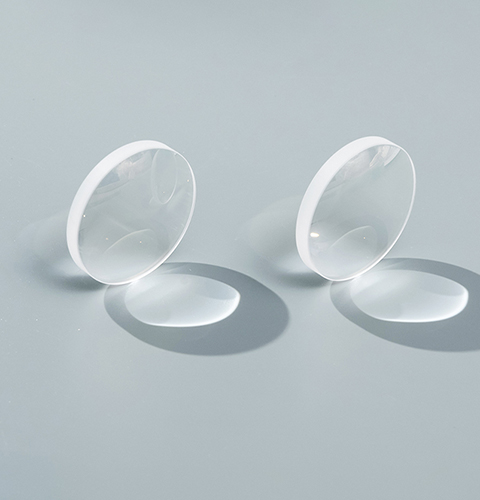N-BK7 (CDGM H-K9L)Plano-Convex Lenses
Each N-BK7 lens can be offered with a 532/1064 nm, 633 nm, or 780 nm laser line V-coating. The V-coating is a multilayer, anti-reflective, dielectric thin-film coating designed to achieve minimal reflectance over a narrow band of wavelengths. Reflectance rises rapidly on either side of this minimum, giving the reflectance curve a “V” shape, as shown in the following performance plots. For more information on other AR coatings such as wavelength ranges of 350 – 700 nm, 400 – 1100 nm, 650 – 1050 nm, or 1050 – 1700nm, please contact us for details.
Paralight Optics offers N-BK7 (CDGM H-K9L) Plano-Convex lenses with options of either uncoated or our antireflection (AR) coatings, which reduces the amount of light reflected from each surface of the lens. Since approximately 4% of the incident light is reflected at each surface of an uncoated substrate, the application of our multi-layer AR coatings improves transmission, which is important in low-light applications, and prevents the undesirable effects (e.g., ghost images) associated with multiple reflections. Having optics with AR coatings optimized for the spectral range of 350 – 700 nm, 400 – 1100 nm, 650 – 1050 nm, 1050 – 1700 nm, 1650 – 2100 nm deposited on both surfaces. This coating greatly reduces the average reflectance of the substrate less than 0.5% (Ravg < 1.0% for the ranges of 0.4 – 1.1 μm and 1.65 – 2.1 μm) per surface, yielding a high average transmission across the entire AR coating range for angles of incidence (AOI) between 0° and 30° (0.5 NA). For optics intended to be used at large incident angles, consider using a custom coating optimized at a 45° angle of incidence; this custom coating is effective from 25° to 52°. Broadband coatings have a typical absorption of 0.25%. Check the following Graphs for your references.
Plano-Convex Lenses
Professional technical engineer dedicated to guide you
According to your actual needs, choose the most reasonable overall design and planning procedures
